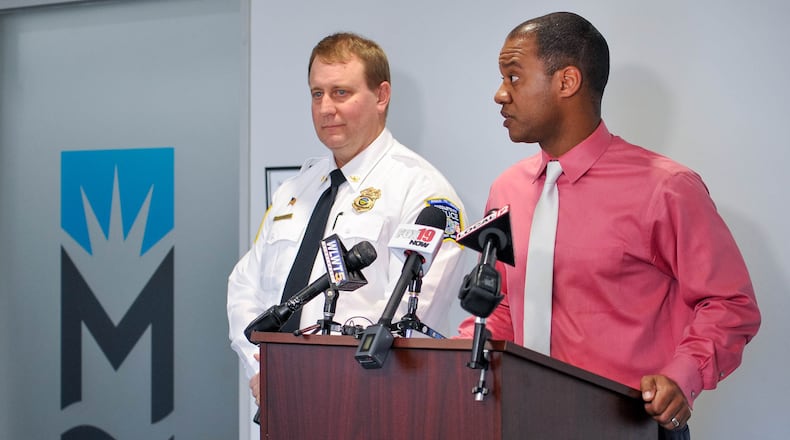On Wednesday, a threatening text message that a middle school student is accused of sending was received by the center through a message system used to confirm appointments. The text message received was a response to that appointment reminder, officials said.
The 14-year-old female student faces a felony charge of inducing panic after the message caused lockdowns at multiple schools throughout the area.
According to the criminal complaint, the student sent the message while on the bus on the way to school. The message said she had a gun in her backpack and “she was wanting to know what to do,” asking another person, according to the complaint. She asked if the other person “was ready,” according to the complaint. It is not clear with whom she believed she was communicating.
The student also indicated in the message she “wasn’t sure if she wanted to shoot up the school.”
In-school wellness centers, which provide medical, dental, vision and behavioral care for students, staff and eligible members of the general public, have security precautions that include physical, locked barriers preventing patients from accessing school areas.
Besides structural security barriers, most area schools have armed school police officers also known as “school resource officers.”
Besides Middletown, Hamilton Schools has an in-building wellness center at its Garfield Middle School. Fairfield Schools has a separate wellness center on the campus of its intermediate school.
“The Hamilton’s School Based Health Center has its own separate entrance so no visitors come into Garfield’s main school office to get to the center,” said Joni Copas, spokeswoman for Hamilton Schools.
Elizabeth Beadle, spokeswoman for Middletown Schools, said that “it is a true health center that is open to the community, (but) all visitors are buzzed in through the front door and there is a locked door in the back of the center that goes into Middletown High School. It is locked at all times.”
The student’s alleged threat prompted Middletown school officials to order the high school – and adjacent middle school – into a “hard lockdown,” which at some districts is referred as a “lockdown.”
Emergency school threat procedures can vary from district to district, though each Ohio public school system must meet state standards for their security plans.
Lockdown procedures can also differ from district, but in general a hard lockdown requires students to stay in classrooms. Moreover, no one is allowed to enter the school building – including school parents - except for authorized personnel and first-responders.
A soft lockdown – also called an “external lockdown” often involves allowing student movement within a school building but no access or exit is allowed for school parents or others from the structure.
Officials said a phone with a number related to the phone that sent the threat message was “pinged” at Lakota East High School, which caused the lockdown there.
Betsy Fuller, spokeswoman for Lakota Schools, said the threat forced a “full lockdown” at the high school.
“Bearacades (classroom security door blocks) were deployed and students and staff remained in classrooms. At the (Lakota East) freshman campus, a soft lockdown was issued, which means classes continued but no one was allowed to enter the building,” said Fuller.
Holli Morrish, spokeswoman for Talawanda Schools, said the district’s school buildings are like others in the region in that they are locked to outsiders at all times with all visitors having to enter through one monitored, main entrance.
“What this means is that all visitors to our schools must enter through the main entrance, connect with our trained office staff, and receive a visitor pass if they are to be permitted someplace else in the building during the school day,” said Morrish.
“When there is a risk or a caution that is needed, principals may choose to expand this safety measure to not allow students and staff to be outside of the classrooms. If there is a more serious risk that involves law enforcement … a designated officer … takes over our campus as the incident commander,” she said.
About the Author
